In honor of National Fire Prevention Week (October 5 – October 11, 2014), the #DisneyInHomeEvent and #FireAndRescue bloggers visited the Van Nuys air tanker base and met with the Assistant Fire Chief, Steve Martin, along with several members of the crew. This event was part of the #VeryBadDayEvent press trip with Disney. Travel and accommodations were covered, and lots of cool opportunities like this one were offered, but all opinions are my own.
In 1911, on the 40th anniversary of the Great Chicago Fire, the Fire Marshals Association of North America sponsored the first National Fire Prevention Day as a way to keep the public informed about the importance of fire prevention. In 1925, President Calvin Coolidge officially proclaimed that the week (Sunday through Saturday) in which October 9 falls would be National Fire Prevention Week.
Meeting the real people and planes behind Planes: Fire and Rescue
Assistant Fire Chief Steve Martin was so kind to meet with us to talk about a few things – what the LA County Fire Department does, specifically with their air operations unit, as well as the LA Country Fire Department’s involvement in the making of Disney’s Planes: Fire and Rescue. Honestly, hearing him talk about how much Disney relied on real aerial fire fighters to create a realistic and technically accurate story was fascinating to me!
“I’ve got to give props to the Disney people. They do their homework.” –Steve Martin
Chief Martin began by introducing us to the two Super Scoopers (can you see the resemblance between this real super scoopers and Dipper?) and explained that “they come from the province of Québec. They always come here in September and they generally can go, depending on when the rains come, through middle of November but we’ve had them as long as into January. Last year we had big fires in January so they were here until February.”
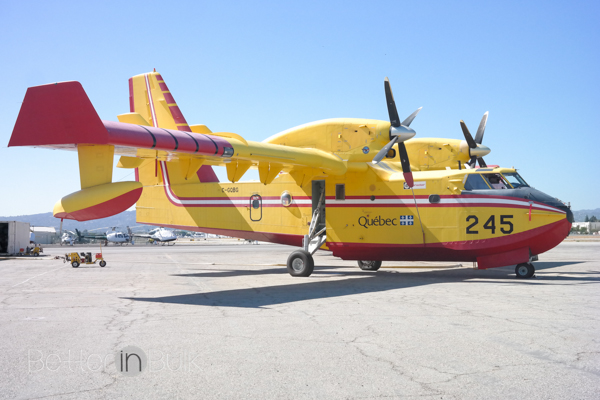
One of the Super Scoopers on lease from Quebec. These Super Scoopers can scoop up 1600 gallons in 12 seconds through tiny holes at the bottom of the tank.
About 3+ years ago, when Disney began making plans for Planes: Fire and Rescue, they contacted the pilots and fire fighters at the LA County Fire Department.
Martin said, “They came out and they met our folks just like you did today…came here to the facility. They met some of the pilots and the maintenance crew. They walked around the aircraft. They had them fire it up. They listened to the sound of it. They watched it fly. I think some of them even took a flight in it. They really, really did their homework.”
A few weeks later, they called Martin back and said they’d missed a few things and asked to stop by again. They continued to stop by and send the fire fighters questions as they worked on the script.
Steve Martin said, “They would send me a script and they’d highlight, Is this the proper word? Is this what terminology you would use? Is this what you would you say in this case? And a lot of times they would scratch something out and I’d say no, no we don’t talk like that. I guess that’s what the definition of someone being a technical advisor is.”
I loved how Martin related his experience helping the Disney writers get the language and terminology down to all of the previous Disney movies he’d seen, “If I look back and I think when my son was young and I’d go to Disney movies and it was something that I did’t know a lot about, it sure sounded like it was correct. But in this case here when it was about the aircraft and it was about flying, it was about the fire department, it was about rescues, we knew the language that we speak. And they took every single one of those things that I said and put it in the script and changed the script.”
He said that after Planes: Fire and Rescue came out, his email exploded with messages from his fire fighting friends. The one thing that everyone said to him was that the movie was very technically correct.
“Anybody in the fire service who knows from the political overtones of it to the vernacular they used during the flying or rescues or hoists, whatever it was they did, they took all those changes that we put down and gave them and did not embellish on it. Put it exactly like it was. So again, that made me feel good because the last thing I want to do is have something out there that my boss goes, Hey, did you tell them to say that? And you know I wouldn’t be an assistant chief anymore.”
Assistant Chief Martin told us that they get their two super scoopers on “loan” from Canada. Every year, a crew comes down from Quebec with the two super scoopers and stay from about August through January (more if the fire season extends). He explained that the need for fast-acting aerial fire fighters like this is greater now because of all of the homes that have been built in the hills and into the mountains surrounding the LA area. It’s important for them to jump on fires – even small fires – quickly because of the danger of fires spreading quickly.
Martin said, “So when you have a small fire, because every fire starts basically small, but when we talk 100,000s of acres that runs across Malibu to the ocean or thousands of homes in the way this is what we need right here (pointing to the aircraft). And like I said [Planes: Fire and Rescue] might’ve been a cartoon but if that’s what you saw, they are very, very realistic as far as what they do, how they talk and what they did.”
Fire Prevention Week
In LA County, and I’m sure many areas across the nation, they use National Fire Prevention Week to highlight and raise awareness of the programs and things that the do year-round. Captain Scott Miller stepped in at this point to speak about fire prevention, from home fire prevention to the things that they do with schools and county fairs. He gave us his top tips for staying safe:
- Recognize what the danger is.
- Get away from the danger – either shut the doors/windows or get outside, whatever is going to get you away from the fire.
- Always have 2 exits.
- Call 911. Don’t hesitate.
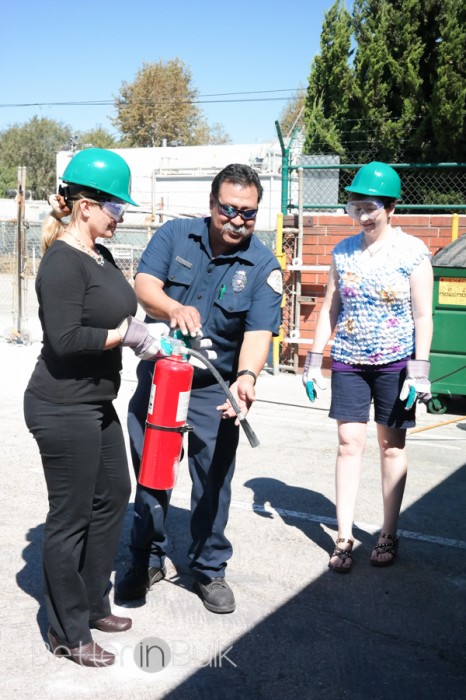
The fire fighters gave us training on how to properly put out small fires. For larger fires…call the experts! (pictured here: Laura and Jesica from our group)
The fire fighters at the Van Nuys tanker base gave us some personal training on putting a fire out with a fire extinguisher. They emphasized three main points: only try to put out a fire on your own if it is very small. If it’s not very small, it’s always safer to get out and call 911. The 2nd point was to aim at the base of the fire and put it out from the base, not the flames. And, third, NEVER turn your back on a fire. We went in with partners, and one person always had to keep their eyes on the fire to make sure it didn’t flare up.
To get more information about fire safety and fire prevention, check out LA County Fire Department’s website.
And be sure to get Disney’s Planes: Fire and Rescue on Blu-ray/DVD when it comes out on November 4! I can’t wait to see it again just to notice all of the amazing technical (and technically correct) fire fighting feats!
Connect with Planes: Fire and Rescue
- Facebook: https://www.facebook.com/DisneyPlanes
- Twitter: https://www.twitter.com/DisneyPictures
- Website: https://www.disney.com/planes-fire-and-rescue
BONUS: The kids will love these Planes: Fire and Rescue-themed fire safety tips and activities!

Be sure to check out these Planes: Fire and Rescue printable activity sheets, too!
© 2014, Food Fun Family. All rights reserved.

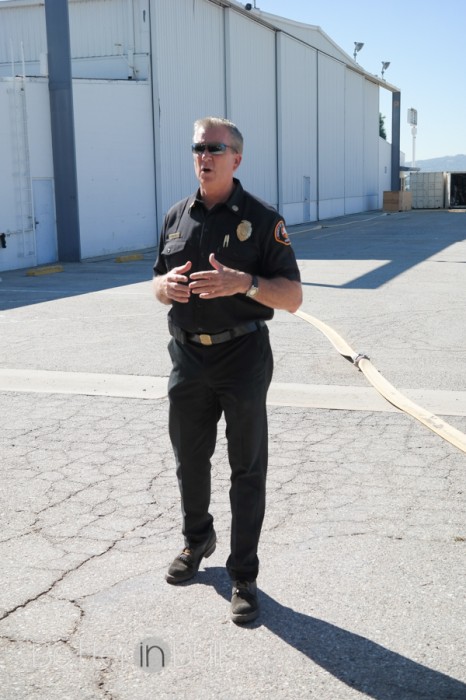
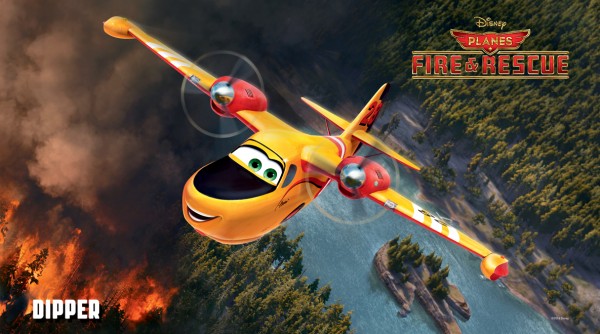


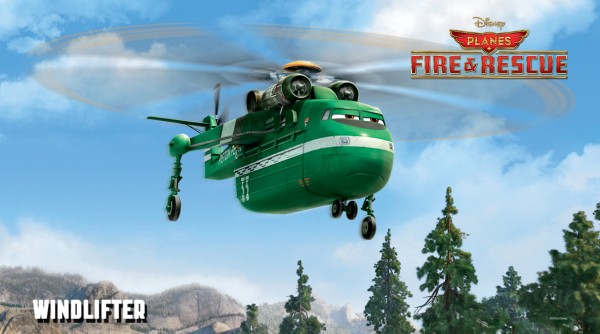

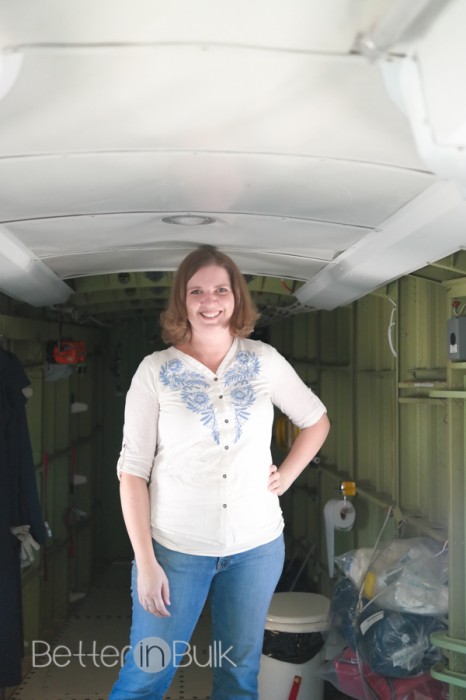
Love how we have a week honoring them!